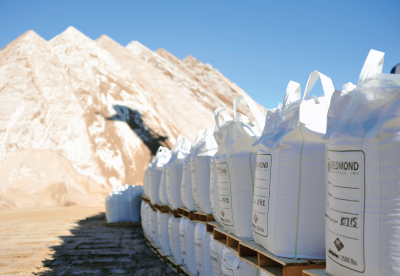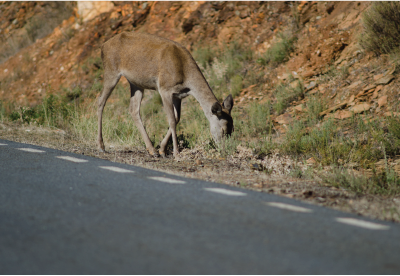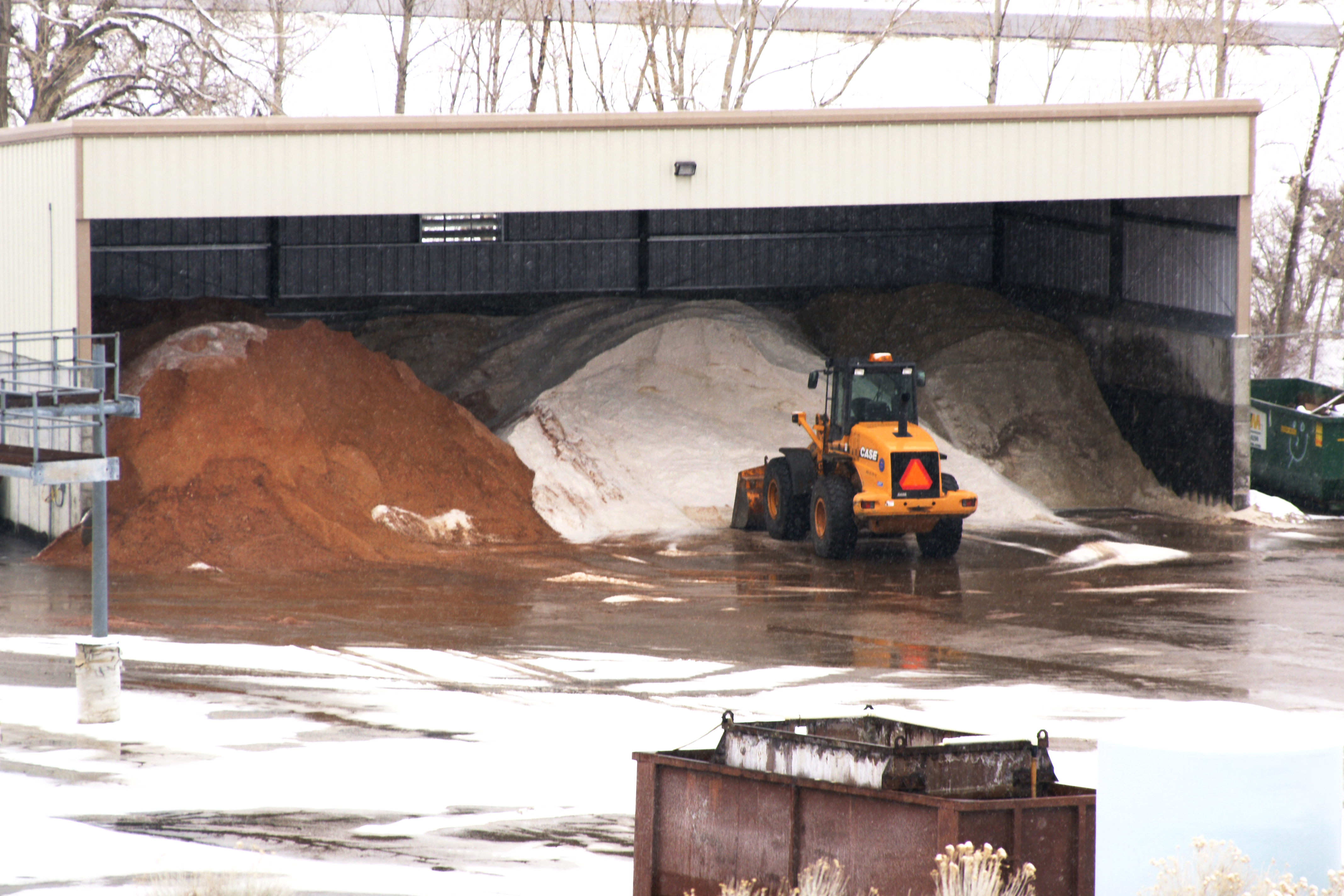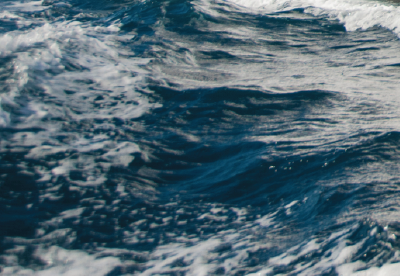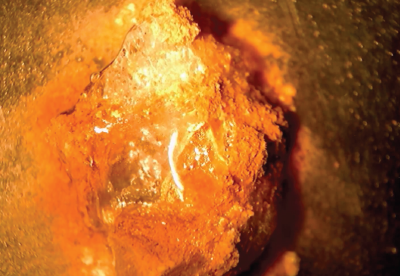Date March 23, 2021 | Brooke Loeffler
Reducing Corrosion From Winter Road Treatments
Look At The Whole Corrosion Picture
Winter road corrosion, as a whole, is a lot more complex than the simple oxidation of metal and flaking of concrete. Every object on or near a road side is subjected to physical, chemical, and ecological degradation. To make the best road management decisions, we must consider the potential corrosion, and damage to:
- Infrastructure: concrete, asphalt, drains, road barriers, public vehicles, signage, lighting, etc.
- Air Quality: particulate matter (PM) levels
- Waterway Health: water flow, biochemical oxygen demand, health of aquatic life, etc.
- Private vehicles/property: windshields, body work, etc.
- Roadside Vegetation and Wildlife: introduction of harsh/toxic chemicals, plant burn, soil degradation
Before we look at each of these categories, it is important to note that ice and snow removal is not just important for public safety. Car accidents, in and of themselves, are extremely corrosive.
Car Accidents Cause Corrosion
Car accidents can cause physical, chemical, and ecological corrosion to every one of the categories mentioned above.
- Physical: damage to road surfaces, barriers, sign poles, light poles, public and private property, debris, etc.
- Chemical: spilled and leaking corrosive fluids
- Ecological : wildlife collisions, vehicular fluids leaking into roadside vegetation/soil/waterways, sharp and dangerous debris, fires caused by impact, etc.
Snow and ice can cause massive pile ups of vehicles and exponentially increase these corrosive factors. Already this year, the United States has endured many winter pile ups...some involving over 100 vehicles! Snow and ice removal practices can cause gradual degradation to our roads and their surroundings. However, when used responsibly, they pale in comparison when viewed against the corrosion and damage caused by accidents.
Facets of Corrosion
The best winter road management practices look at corrosion from multiple angles. A well rounded approach allows us to more accurately prepare for and mitigate corrosion before it becomes a costly problem.

Air Quality
When spreading machines apply road aggregates like sand, gravel, or sand/gravel/deicer mixes, dust particles are dispersed into the air. Because these aggregates are not water soluble, they do not dilute with melting snow and accumulate over the winter. Vehicle traffic continues to grind down and re-distribute this particulate matter (PM) into the air. Come spring, street sweepers need to remove a winter’s worth of aggregate from the road surface and air quality continues to degrade. Snowbelt states such as Colorado and Utah have found that switching to liquid and granular deicers, and eliminating road aggregates has greatly reduced their PM pollution levels.
- Click to learn more about particulate matter and PM 10/PM 2.5 air pollution.
Waterway Health
Even waterways not directly adjacent to roadsides can experience corrosion. Road aggregates and over use of anti-icer/deicer can physically, chemically, and ecologically degrade waterway health. Sand and gravel choke water flow, increase turbidity, bind to chemicals from the road surface, and can artificially alter the path and depth of a water channel. Anti-icers and deicers containing glycol or agricultural byproducts can increase biochemical oxygen demand and harm aquatic life.
- Click to learn which deicing ingredients adversely affect biochemical oxygen demand.
- Learn more about waterway health and winter road maintenance.
Private Vehicles
Over time, anti-icers, deicers, and road aggregates can degrade and damage private vehicles driving on winter roads. Road aggregates can scratch, ding, and crack vehicle windows and over-using anti-icers or deicers can cause metal components to oxidize. The best practice to mitigating private vehicle corrosion is safe application rates and not using excessive amounts of product.
- Look below to learn how to properly apply deicer in responsible amounts.
Infrastructure
Concrete and metal surfaces on and near the roadside are vulnerable to the same exposure. Repeated freeze thaw cycles can physically and chemically wear down concrete, and non-treated metal fixtures can oxidize and weaken. More and more areas are finding that air-entrained concrete and pre-treating aluminum and steel with corrosion inhibitors is an effective way to reduce degradation. According to the Oregon Department of Transportation “proper air entrainment, finishing, and curing can provide far better protection for concrete than other solutions.”
- Click to learn more about ice melt products and concrete
Roadside Vegetation and Wildlife
Substances leaching out of deicing treatments will enter the environment to some extent. Harsh chemical additives pose a risk to soil health, vegetation, and wildlife. A combination of choosing the right deicing products and responsible application rates will help reduce these effects. In general, liquid additives in deicers leach out in higher concentrations than homogenous blends. In addition, some products add dyes to their products to enhance performance in the sun and make it easier to see where product has been applied. According to the EPA, substances found in dyes can bio-accumulate and “dyes tend to absorb ultraviolet radiation and have the potential to form decay products more toxic than the original parent dye compound.”
- Learn more about what leaches out of deicers.
- Click to learn more about dyed vs. naturally colored deicers.
How To Reduce Corrosion
Use Deicer Responsibly
Using deicing products in responsible amounts is one of the best practices for reducing corrosion. Communicating with snow fighting teams and keeping accurate records of application rates is essential. Properly calibrating spreading equipment is another way to control how much deicer is being applied.
- Learn how to calibrate snow plow equipment.
Use The Right Road Treatment
In addition to responsible application rates, choosing the right product can greatly help reduce corrosion. Harvested from a unique, Jurassic era mineral deposit in central Utah, Ice Slicer has many natural corrosion inhibiting benefits.
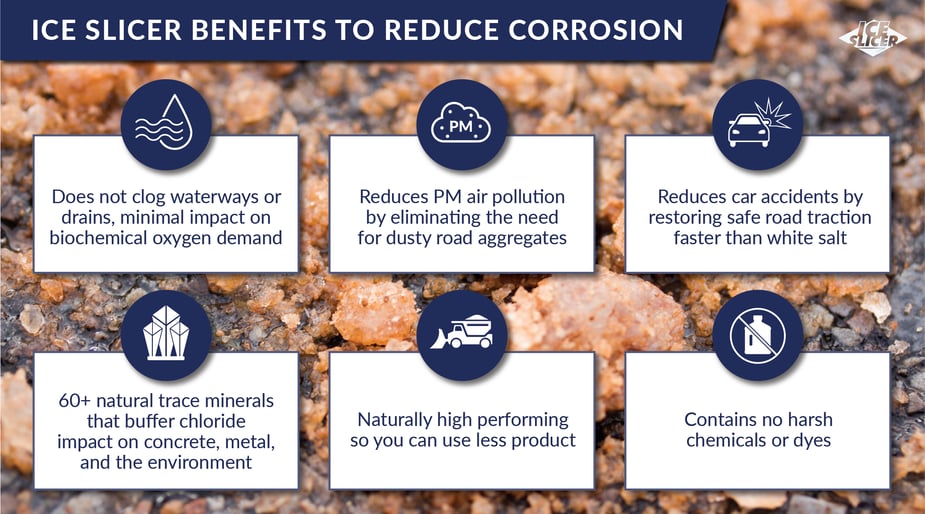
Ice Slicer®:
- Does not clog drains, choke flow of waterways, and has minimal impact on biochemical oxygen demand
- Eliminates the need for dusty road aggregates and reduces PM air pollution levels
- Reduces car accidents by restoring safe road traction faster than white salt
- Contains over 60 naturally occurring trace minerals that buffer the effects of chlorides on concrete, metal, and the environment (in fact, when applied in the right amounts, plants love it!)
- Is naturally high performing so you can cover more lane miles with less product
- Contains no harsh chemicals or added dyes (it simply doesn’t need it)
Mother nature has provided Ice Slicer with a homogenous blend of everything it needs to restore road safely quickly while reducing physical, chemical, and ecological corrosion.
© 2024 Redmond Minerals Inc.


